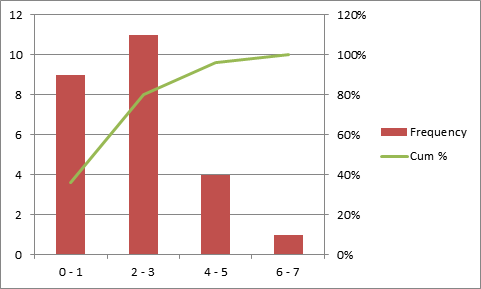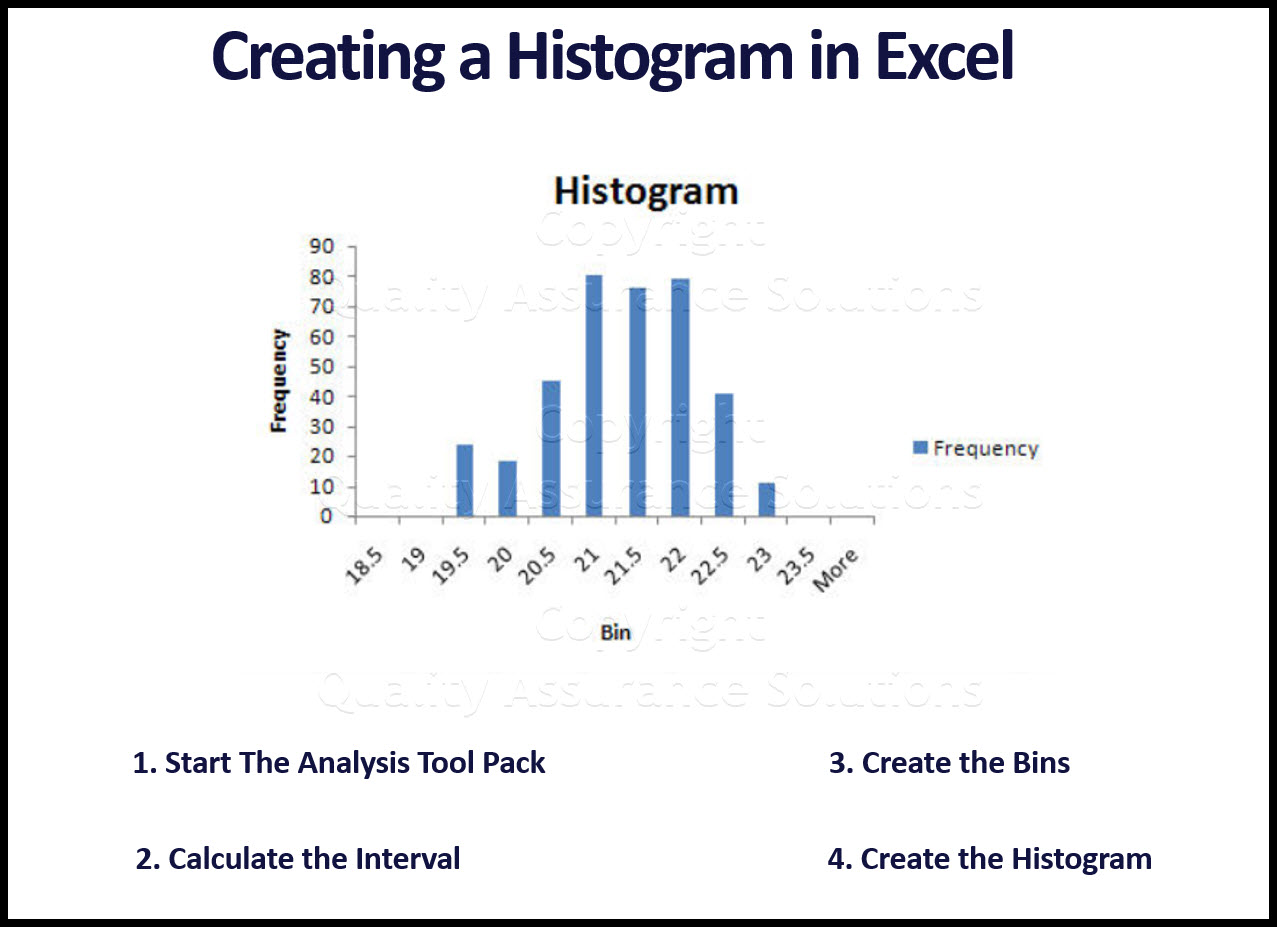
Histogram is a graphical representation of data that shows frequency distribution i.e.

In this article, we will discuss the following: They are very visual as it can easily show you the distribution of numerical data, like seeing which numerical ranges are the most common. Unfortunately, the Histogram in Data Analysis is not dynamic, and you have to open the Histogram dialog every time when working with a new set of data.Excel 2016 Histogram Charts are one of the many new Charts available only in Excel 2016. The Histogram dialog allows selecting a target location to create the chart. You can use static numbers, or calculate them with formulas to make them dynamic. The Bin range is the numbers that specify the limits of each interval. The Input range can be set to the results of the simulation. In the Histogram dialog, Input range and Bin range should be selected. Selecting it and clicking OK opens the Histogram window. You will see the Histogram option in this dialog. The tool can be found under the DATA tab after activation, with the name of Data Analysis. Select the Analysis ToolPak and click OK. Here, select Excel Add-ins in the Manage dropdown and click the Go button. You can activate it from the Add-ins dialog from FILE > Options > Add-Ins. It is a ‘hidden’ add-in - it’s not active in Excel by default. The Analysis ToolPak add-in is a handy tool that is frequently used for data analysis. To see the results in an easier to read format, you can graph this data. This is where the most likely results lie. You can see that the majority of scenarios are gathered around the middle area of the chart. Press the Ctrl + Shift + Enter key combination (instead of pressing the Enter key) to enter the formula.Type in the FREQUENCY formula, using the simulation results and bins values as arguments.Start by selecting the empty range next to the bins.You can use the bins values for a Data Analysis Histogram as well. Select the cell below and add the value above the bin size.Since we know the start point (minimum value) and the bin size, we can create our bins. Calculate the difference between the minimum and maximum.

Too many steps might make it harder to read the results. This is optional, but more steps increase the precision level. This formula requires bins values, and the first thing we need to do is calculating the bins. It calculates how often values occur within a specified range. The FREQUENCY formula calculates the values in a structure that is required for a histogram. You can create an Excel histogram in two ways: Grouping data into specific percentiles can give you a better overview of the big picture.

A histogram is a visual representation of the distribution of numerical data.


 0 kommentar(er)
0 kommentar(er)
